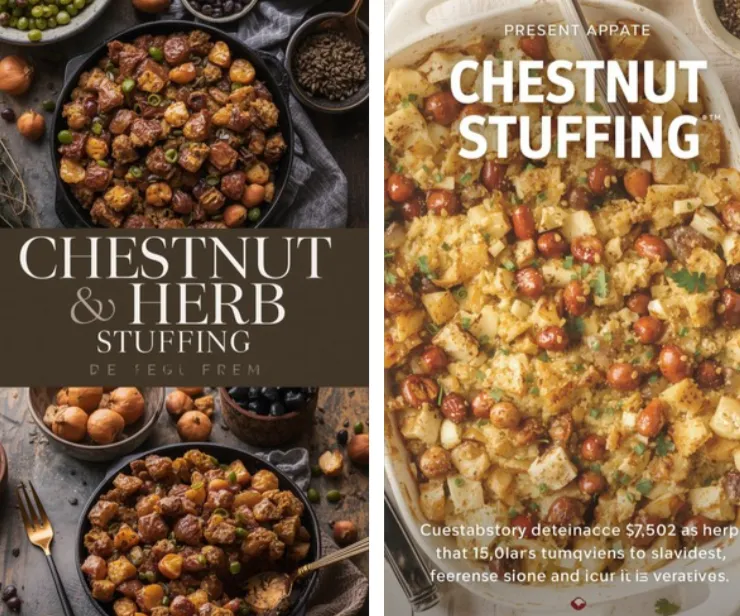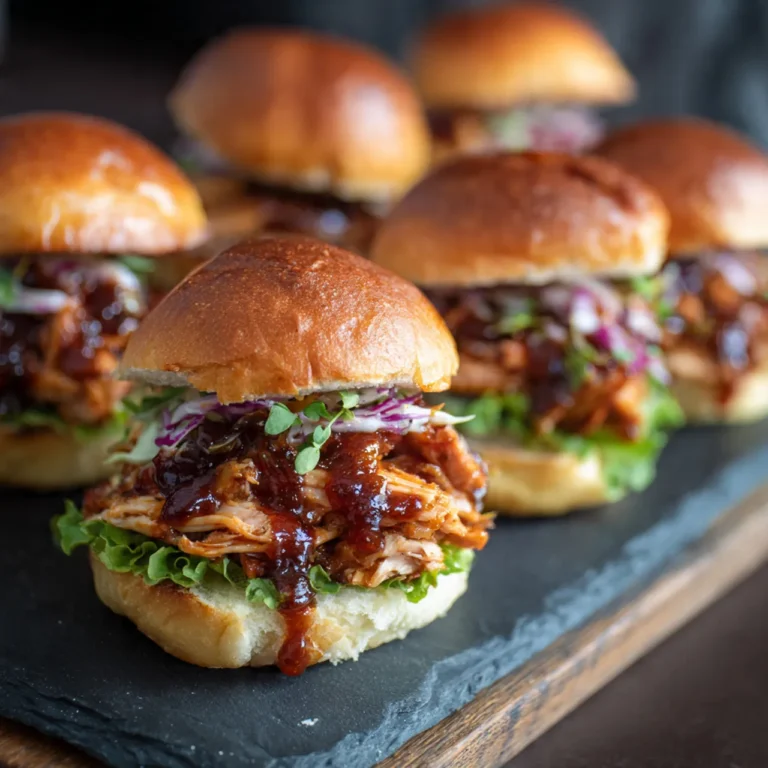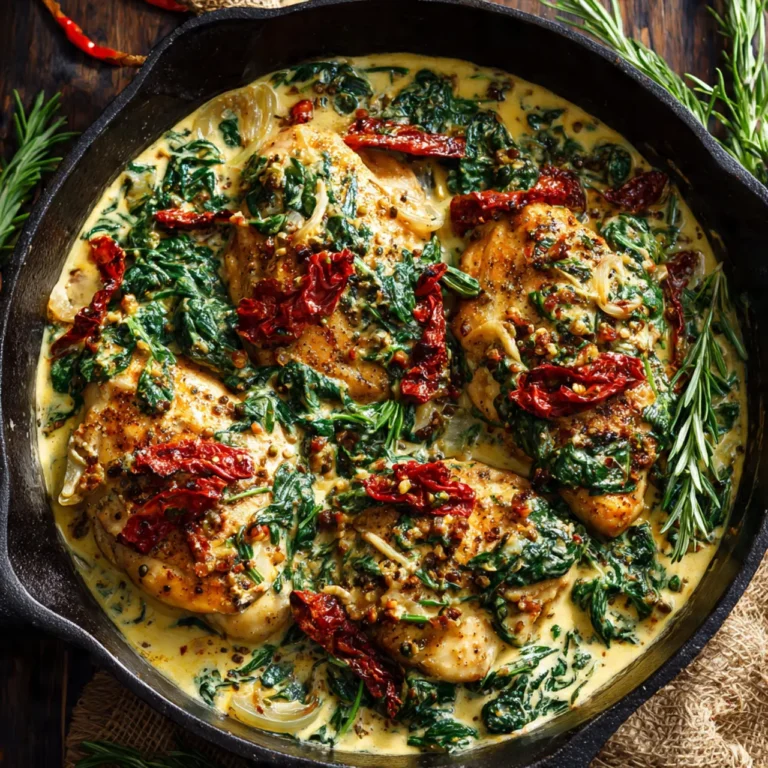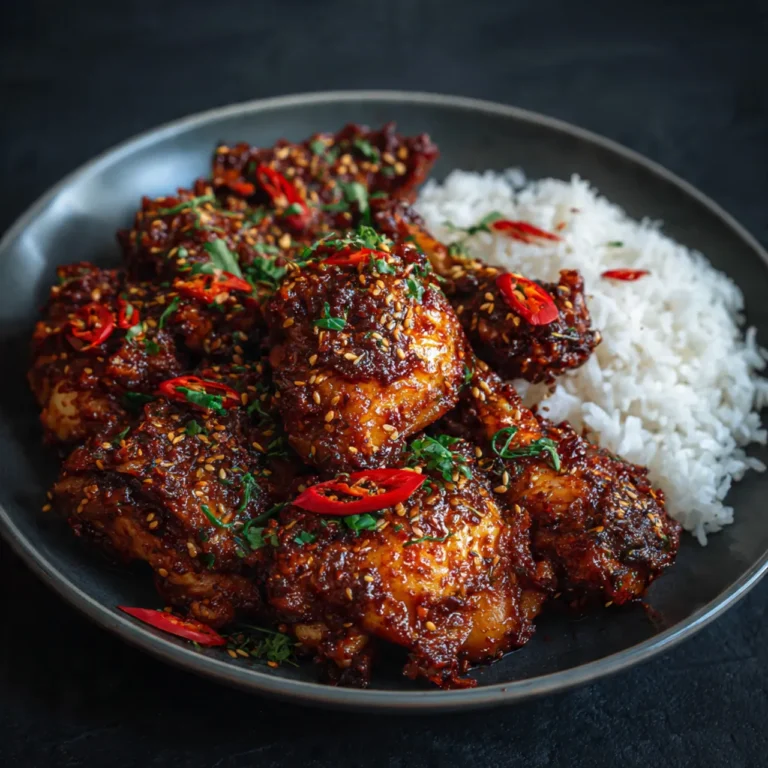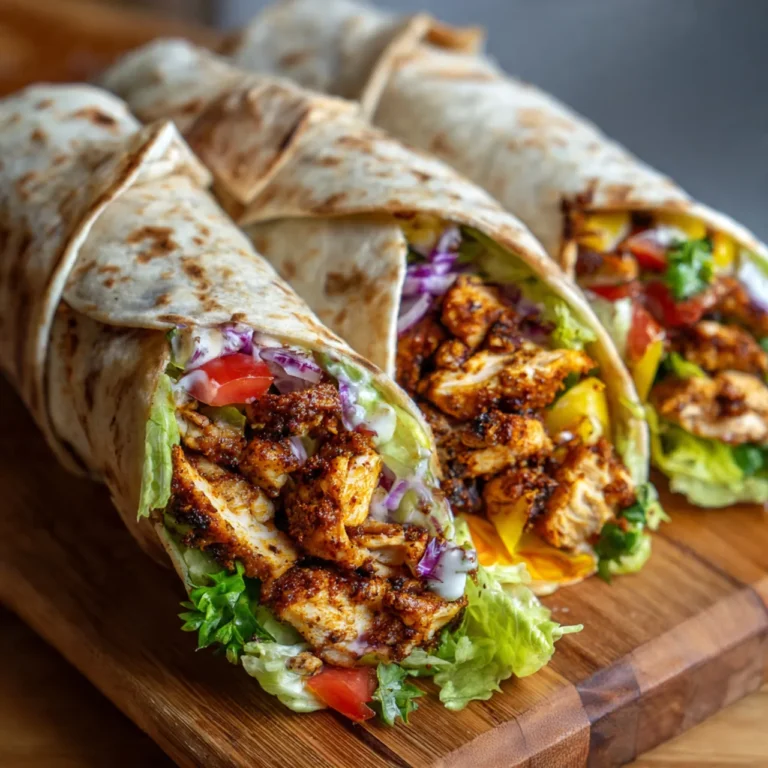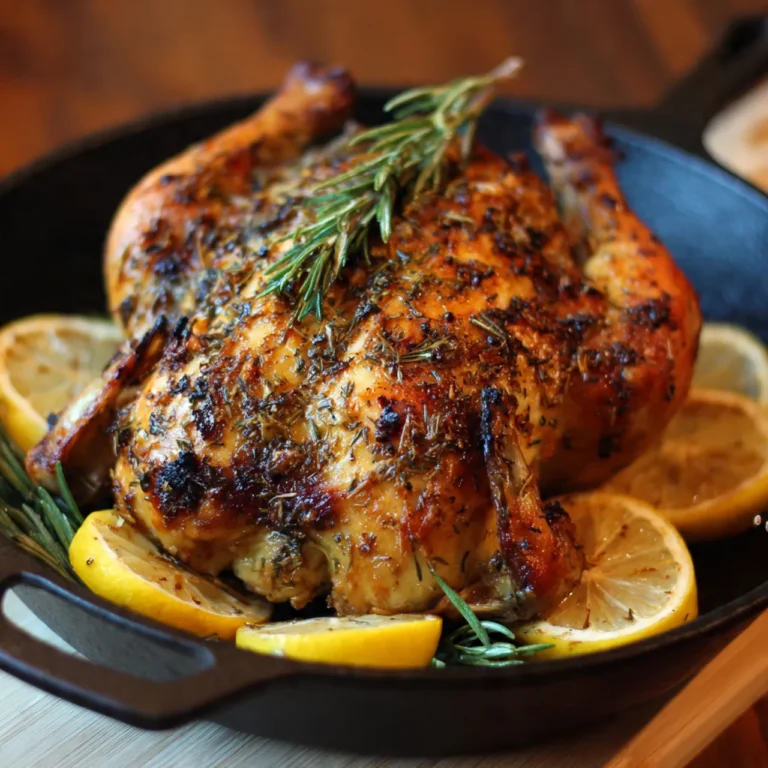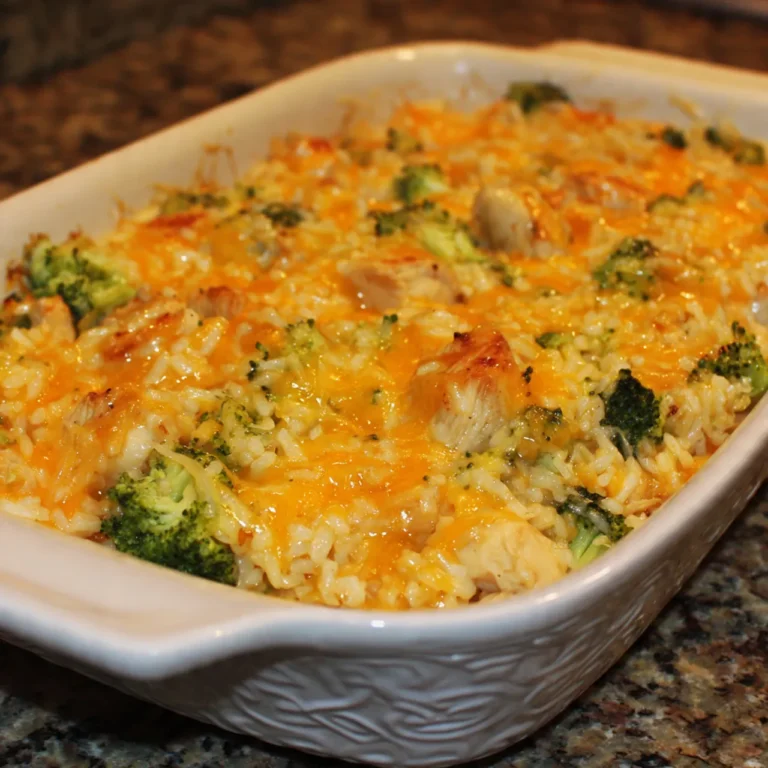Chestnut & Herb Stuffing is a classic holiday side dish that brings together the earthy sweetness of chestnuts, the aromatic depth of fresh herbs, and the comforting texture of bread in a single, elegant casserole. This stuffing is a celebration of seasonal flavors, perfect for Thanksgiving, Christmas, or any festive gathering. The combination of roasted chestnuts, sautéed vegetables, and a medley of herbs creates a dish that is both hearty and refined, offering a sophisticated alternative to more traditional bread or sausage stuffings. Whether served alongside roast turkey, chicken, or as a vegetarian centerpiece, chestnut and herb stuffing is sure to become a cherished part of your holiday repertoire. This comprehensive guide explores the history of chestnut stuffing, essential ingredients, step-by-step instructions, expert tips, creative variations, serving suggestions, presentation ideas, nutritional insights, and answers to common questions. By the end, you’ll have all the knowledge and inspiration needed to master this festive side and make it your own.
The History and Tradition of Chestnut Stuffing
Chestnuts have been a staple in European and Mediterranean cuisine for centuries, prized for their sweet, nutty flavor and versatility. In France and Italy, chestnuts are often used in soups, desserts, and savory dishes, especially during the autumn and winter months. The tradition of adding chestnuts to stuffing dates back to the 18th and 19th centuries, when chestnuts were abundant and commonly used as a source of sustenance. In the United States, chestnut stuffing became popular in the 19th century, particularly in the Northeast, where American chestnut trees once flourished. Today, chestnut and herb stuffing is a beloved holiday dish, celebrated for its unique flavor, elegant presentation, and connection to culinary history.
Why Chestnut & Herb Stuffing?
Chestnut & Herb Stuffing is more than just a side dish; it’s a celebration of texture, aroma, and tradition. The combination of tender, slightly sweet chestnuts, savory bread, sautéed onions and celery, and a bouquet of fresh herbs creates a dish that is both comforting and sophisticated. It’s naturally vegetarian, easily adapted for vegan or gluten-free diets, and packed with fiber, vitamins, and minerals. This stuffing is versatile, easy to prepare in advance, and can be customized with a variety of add-ins, from dried fruit and nuts to mushrooms or sausage. Whether you’re hosting a holiday feast or looking for a special side for a weeknight dinner, chestnut and herb stuffing is sure to impress.
The Science of Great Stuffing
The key to perfect chestnut and herb stuffing lies in balancing moisture, texture, and flavor. The bread acts as a sponge, absorbing the savory broth and aromatics while retaining enough structure to avoid becoming mushy. Sautéed onions and celery provide sweetness and crunch, while chestnuts add a creamy, nutty bite. Fresh herbs infuse the dish with aroma and complexity, while eggs (if used) help bind the mixture for a cohesive, sliceable stuffing. Baking the stuffing uncovered yields a crisp, golden top, while covering it results in a softer, more pudding-like texture. The choice of bread, broth, and seasonings allows for endless variation and personalization.
Selecting the Best Ingredients
- Chestnuts: Use roasted, peeled chestnuts for convenience. Fresh chestnuts can be roasted and peeled at home, but vacuum-packed or jarred chestnuts are widely available and save time.
- Bread: Use a sturdy, day-old loaf such as French, Italian, sourdough, or country white. Avoid overly soft sandwich bread, which can become gummy. For extra flavor, try a mix of white and whole wheat, or add a portion of rye or multigrain.
- Vegetables: Classic stuffing relies on onion and celery, finely diced and sautéed until tender. Leeks, shallots, or fennel can be added for variation.
- Herbs: Fresh sage, thyme, parsley, and rosemary are traditional. Tarragon, marjoram, or chives can add unique notes.
- Broth: Use homemade or high-quality store-bought vegetable or chicken broth. Low-sodium varieties allow for better control of seasoning.
- Butter or Olive Oil: Adds richness and helps sauté the vegetables. Olive oil is ideal for a vegan version.
- Eggs: Optional, but help bind the stuffing and create a custardy texture.
- Seasonings: Salt, black pepper, and sometimes a pinch of nutmeg or poultry seasoning.
- Add-ins: Dried cranberries, apricots, or cherries for sweetness; toasted nuts for crunch; mushrooms for umami; sausage for a heartier version.
Step-by-Step Recipe: Chestnut & Herb Stuffing
Ingredients
- 1 loaf (about 1 pound) day-old bread, cut into 1/2-inch cubes (about 10 cups)
- 2 cups roasted, peeled chestnuts, coarsely chopped
- 1 cup (2 sticks) unsalted butter or 1 cup olive oil
- 2 cups diced yellow onion (about 2 medium)
- 1 1/2 cups diced celery (about 3-4 stalks)
- 2-3 cloves garlic, minced (optional)
- 1/4 cup chopped fresh parsley
- 2 tablespoons chopped fresh sage (or 2 teaspoons dried)
- 1 tablespoon chopped fresh thyme (or 1 teaspoon dried)
- 1 tablespoon chopped fresh rosemary (or 1 teaspoon dried)
- 1 teaspoon salt (plus more to taste)
- 1/2 teaspoon freshly ground black pepper
- 1/4 teaspoon nutmeg (optional)
- 2 1/2 to 3 cups low-sodium vegetable or chicken broth, plus more as needed
- 2 large eggs (optional, for binding)
- Butter or oil for greasing the baking dish
Instructions
- Prepare the Bread: Cut the bread into 1/2-inch cubes. Spread on a baking sheet and toast in a 300°F (150°C) oven for 20-30 minutes, stirring once, until dry and lightly golden. Let cool. Alternatively, leave the bread cubes out overnight to stale.
- Sauté the Vegetables: In a large skillet or Dutch oven, melt the butter or heat the olive oil over medium heat. Add the onion and celery (and garlic, if using) and cook, stirring occasionally, until soft and translucent, about 10 minutes. Do not brown.
- Add the Chestnuts and Herbs: Stir in the chopped chestnuts, parsley, sage, thyme, rosemary, salt, pepper, and nutmeg. Cook for 2-3 minutes until the herbs are fragrant and the mixture is well combined. Remove from heat.
- Combine Bread, Chestnuts, and Vegetables: Place the toasted bread cubes in a large mixing bowl. Add the chestnut and vegetable mixture. Toss gently to combine.
- Add Broth and Eggs: In a separate bowl, whisk together the broth and eggs (if using). Pour over the bread mixture, tossing gently until evenly moistened. The bread should be moist but not soggy; add more broth as needed.
- Transfer to Baking Dish: Butter or oil a 9×13-inch (or similar) baking dish. Spoon the stuffing mixture into the dish, spreading evenly. Dot the top with a few small pieces of butter or drizzle with olive oil for extra richness.
- Bake: Cover with foil and bake at 350°F (175°C) for 30 minutes. Remove the foil and bake for an additional 20-30 minutes, until the top is golden and crisp and the stuffing is heated through.
- Rest and Serve: Let the stuffing rest for 10 minutes before serving. Garnish with extra herbs if desired.
Variations and Creative Adaptations
Vegan Chestnut & Herb Stuffing
Use olive oil instead of butter, vegetable broth, and omit the eggs. Add extra nuts or seeds for richness.
Gluten-Free Chestnut & Herb Stuffing
Use gluten-free bread and ensure all other ingredients are gluten-free.
Chestnut & Herb Stuffing with Dried Fruit
Add 1/2 cup dried cranberries, cherries, or apricots for a sweet-tart burst of flavor.
Chestnut & Herb Stuffing with Mushrooms
Sauté 8 ounces of sliced mushrooms with the onions and celery for an earthy, umami-rich variation.
Sausage Chestnut & Herb Stuffing
Brown 1 pound of bulk breakfast sausage or Italian sausage and add to the bread mixture for a heartier, savory stuffing.
Chestnut & Herb Stuffing Muffins
Spoon the mixture into muffin tins for individual servings with extra crispy edges.
Chestnut & Herb Stuffing with Apples
Add 1 diced apple (such as Granny Smith or Honeycrisp) for a sweet-tart note.
Chestnut & Herb Stuffing with Leeks
Replace some or all of the onion with sliced leeks for a milder, sweeter flavor.
Tips for the Perfect Chestnut & Herb Stuffing
- Use day-old or toasted bread for the best texture; fresh bread can become mushy.
- Taste and adjust seasoning before baking, as bread and broth salt levels vary.
- For a moister stuffing, add more broth; for a drier, crisper stuffing, use less.
- Let the stuffing rest before serving to allow flavors to meld and the texture to set.
- For extra flavor, use homemade broth and fresh herbs whenever possible.
- Toast nuts and sauté chestnuts until lightly golden for maximum depth.
Serving Suggestions
Chestnut & Herb Stuffing is the perfect companion to roast turkey, chicken, duck, or pork. It also pairs beautifully with vegetarian mains like stuffed squash, mushroom roasts, or lentil loaf. Serve it alongside mashed potatoes, gravy, cranberry sauce, and roasted vegetables for a complete holiday spread. For a buffet or potluck, bake the stuffing in individual ramekins for easy serving.
Presentation Ideas
Serve stuffing in a beautiful ceramic or cast-iron baking dish for a rustic look. Garnish with fresh herb sprigs, toasted chestnuts, or a sprinkle of dried cranberries. For a festive touch, top with a few sautéed mushroom slices or roasted garlic cloves. For individual servings, use muffin tins or mini cocottes.
The Science Behind Chestnut & Herb Stuffing
Stuffing is a study in texture and flavor absorption. The bread’s porous structure soaks up broth and aromatics, while the eggs (if used) create a custard-like binding. Chestnuts add a creamy, nutty bite that contrasts with the crisp top. The Maillard reaction during baking produces the golden, crisp crust. The balance of moisture and air exposure determines whether the stuffing is soft and pudding-like or crisp and toasty.
Chestnut & Herb Stuffing Around the World
While chestnut stuffing is most closely associated with European holiday tables, similar dishes exist worldwide. In France, “farce aux marrons” is a classic accompaniment to roast poultry. In Italy, chestnuts are used in stuffings for game birds and pork. Each culture adapts the basic concept to local ingredients and tastes, making chestnut and herb stuffing a dish as diverse as the world itself.
Health Considerations
Chestnut & Herb Stuffing is a nutrient-dense, fiber-rich side that’s naturally vegetarian and easily adapted for vegan or gluten-free diets. Chestnuts are lower in fat than most nuts and provide vitamin C, potassium, and antioxidants. For a lighter version, use olive oil, reduce the butter, and add extra vegetables. For those with dietary restrictions, check all ingredients for allergens.
Frequently Asked Questions
Can I make chestnut & herb stuffing ahead of time?
Yes, assemble the stuffing up to a day in advance, cover, and refrigerate. Bake just before serving, adding a splash of broth if needed.
Can I freeze chestnut & herb stuffing?
Yes, baked stuffing freezes well. Cool completely, wrap tightly, and freeze for up to 2 months. Thaw overnight in the fridge and reheat in the oven.
Should I bake stuffing inside the turkey or separately?
For food safety and best texture, it’s recommended to bake stuffing in a separate dish. If stuffing the bird, ensure it reaches 165°F (74°C).
How do I keep stuffing moist?
Use enough broth to moisten the bread, cover while baking, and add extra broth if reheating.
Can I add other vegetables or proteins?
Yes, mushrooms, apples, sausage, or even tofu are delicious additions.
Hosting with Chestnut & Herb Stuffing
Stuffing is a crowd-pleaser and can be doubled or tripled for large gatherings. Prepare in advance and bake just before serving for stress-free entertaining. Offer a variety of stuffings—classic bread, chestnut & herb, vegetarian—to suit all guests.
Creative Twists
- Add roasted garlic or caramelized onions for depth.
- Mix in roasted butternut squash or sweet potatoes for color and sweetness.
- Top with crispy fried shallots or leeks for crunch.
- Swirl in a little pesto or sun-dried tomato paste for Mediterranean flair.
- Use wild mushrooms for a luxurious, earthy flavor.
Chestnut & Herb Stuffing Recipe (Summary)
Ingredients:
1 loaf day-old bread, 2 cups chestnuts, 1 cup butter or oil, 2 cups onion, 1.5 cups celery, 2-3 garlic cloves, 1/4 cup parsley, 2 tbsp sage, 1 tbsp thyme, 1 tbsp rosemary, 1 tsp salt, 1/2 tsp pepper, 1/4 tsp nutmeg, 2.5-3 cups broth, 2 eggs (optional).
Instructions:
Cube and toast bread. Sauté onion, celery, garlic in butter/oil. Add chestnuts, herbs, salt, pepper, nutmeg. Combine with bread. Add broth and eggs. Mix, transfer to dish, bake covered 30 min at 350°F, uncover and bake 20-30 min more.
Final Thoughts
Chestnut & Herb Stuffing is a timeless dish that brings warmth, flavor, and sophistication to any table. With its simple ingredients and endless adaptability, it’s a recipe that invites creativity and personal touches. Whether you stick to the classic or explore new variations, stuffing is sure to become a cherished part of your holiday celebrations. Experiment with different breads, herbs, and add-ins to make it your own. With the tips, recipe, and ideas shared in this post, creating the perfect Chestnut & Herb Stuffing is within reach for cooks of all skill levels. Celebrate the season and the joy of gathering with this elegant side dish.
Additional Tips for Success
- Always taste and adjust seasoning before baking.
- For a crispier top, broil for the last few minutes.
- Let the stuffing rest before serving for best texture.
- Store leftovers in an airtight container and reheat gently.
Nutritional Information (Approximate per serving)
- Calories: 200-320
- Protein: 5-8g
- Fat: 10-18g
- Carbohydrates: 24-36g
- Fiber: 3-5g
- Sodium: 350-550mg
Conclusion
Chestnut & Herb Stuffing is a versatile, crowd-pleasing side that brings together the best of seasonal tradition and flavor in a moist, aromatic, and satisfying format. With its simple preparation, stunning presentation, and endless possibilities for customization, it’s a must-have for any holiday feast or family meal. Try different variations, experiment with flavors, and make this festive stuffing your own.
